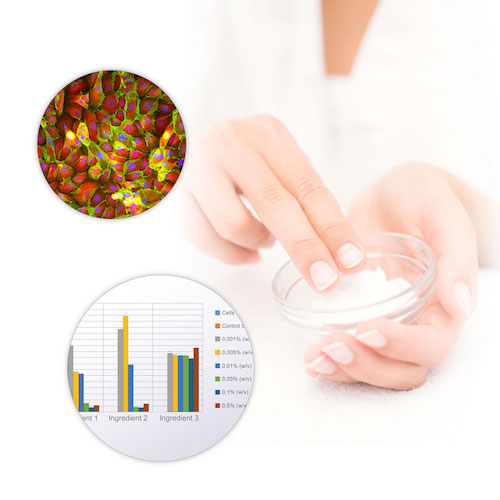 This year, the Cosmetic-360 Meeting organised by the world’s leading perfumery cosmetics network, Cosmetic Valley, will take place in Paris on October 13th & 14th.
This year, the Cosmetic-360 Meeting organised by the world’s leading perfumery cosmetics network, Cosmetic Valley, will take place in Paris on October 13th & 14th.
As a member of this network, tebu-bio will again be participating in this trade show focussed on open innovations. This congress is an excellent opportunity to discover the innovative solutions designed by tebu-bio laboratories in the field of R&D and in vitro testings aiming at better understanding the mechanisms of action and further assessing the efficiency of ingredients.
These solutions cover cell-based and functional assays but also gene expression analysis.
Open innovation in cosmetics and in vitro testings: from Cell culture to new profiling approaches

tebu-bio benefits from a huge bank of primary human cells (including keratinocytes, fibroblasts, adipocytes, sebocytes…) from various sources (donors with a large range of choice ex. gender, age, type, body zones) to develop tailored experimental projects.
As an example, using keratinocytes from young vs. aged donors gives the opportunity to identify biomarkers involved in senescence. By comparison with those present in young donors,
one can determine the pathway and efficiency of active ingredients on a given cellular population. These projects do not need any artificial aging tools like UV irradiation which can generate pathway specific aging process and are not always representative of all natural mechanisms involved. Another approach uses adipocytes issued from normal or high BMI donors, which are helpful tools for testing all slimming mechanisms, including the adipokine pathway.

In combination with oxygen controlled cell culture devices, tebu-bio offers a wide variety of cell culture models including strict physioxic cell conditions for more predictive results and by modifying oxygen concentration they are able to create oxydative stress assays as well as hypoxic stress environment.
After cell culture treatment, tebu-bio’s labs offer unique access to a wide variety of biomarker identification tools (from cell culture supernatants for soluble released signaling biomarkers or intracellular biomarkers impacting cell behaviour). Approaches are multiple to allow high versatility such as :
- Pathway specific gene profiling arrays (oxydative stress, senescence, innate immunity, inflammation, cell metabolism etc…)
- Protein profiling arrays for qualitative (like multiple Western Blots with up to 1,350 markers per array) or quantitative (like multiple ELISAs with up to 360 markers at once) approaches. Markers available are soluble ones which will impact cell environment or intracellular ones wich will modify internal cell behaviour.
- miRNA profiling – highly promising biomarkers are either secreted and found in cell culture supernatant or remain intracellular. miRNAs have the capacity to down regulate RNA translation and are thus powerful mediators of cell activity.
To further complete the analysis of ingredients for cosmetics, functional bioassays are ideal and available as ready-to-use kits or as fee-for-services. The most popular ones include:
- Hyaluronic Acid assay
- sGAG, collagen, Elastin measurements
- Adipogenesis and Adipolysis screening
- PPAR alpha, gamma or delta activity screening
Cosmetic-360 – get your free invitation courtesy of tebu-bio
Looking for open innovation and outsourcing partners for your research projects in cosmetology?
Come and talk to us at Cosmetic-360 on October 13th & 14th at the Carroussel du Louvres in Paris.

Just request and download your free invitation here!




